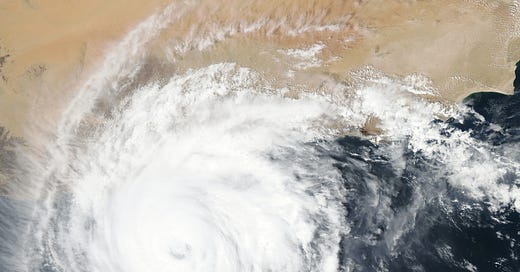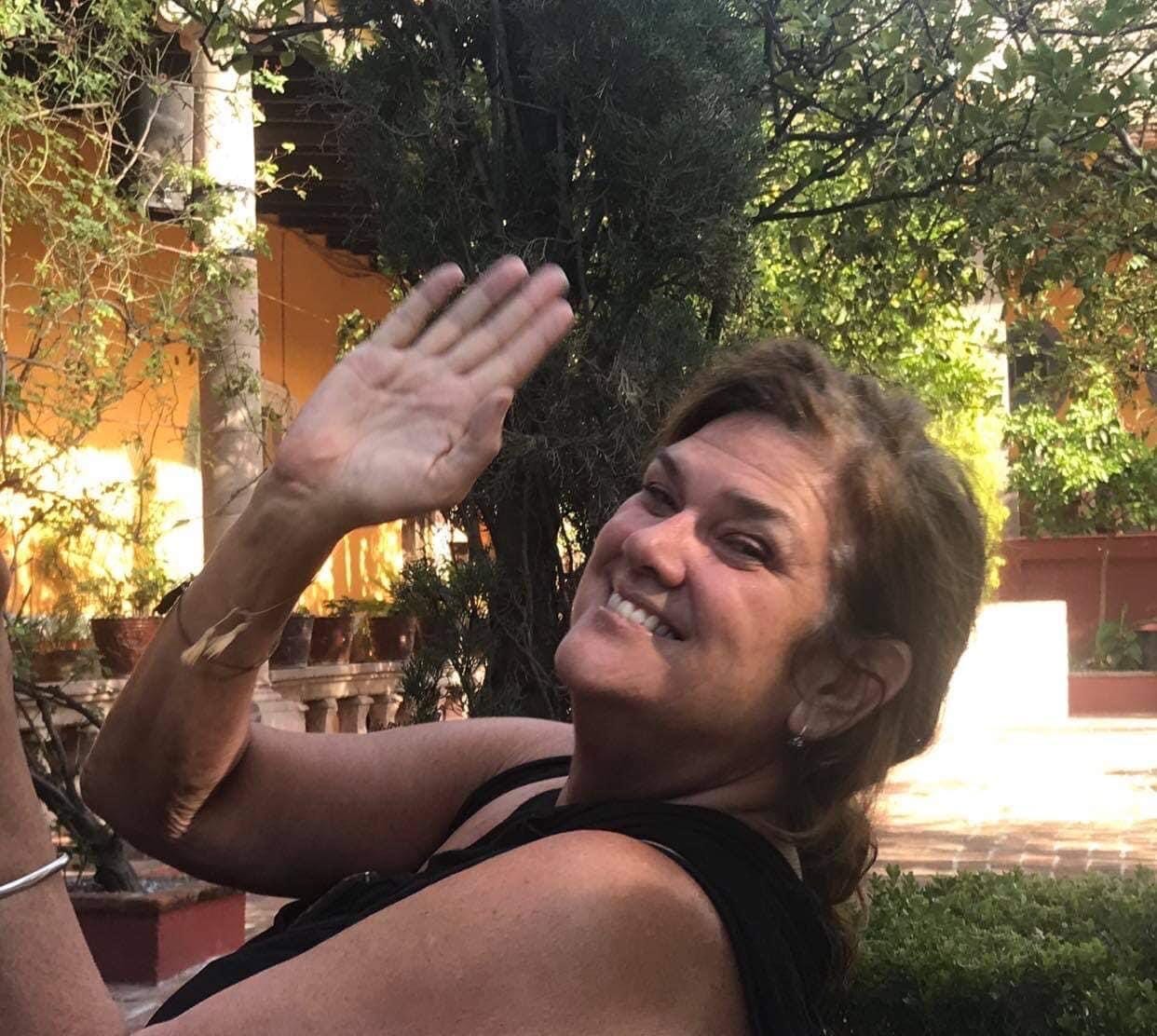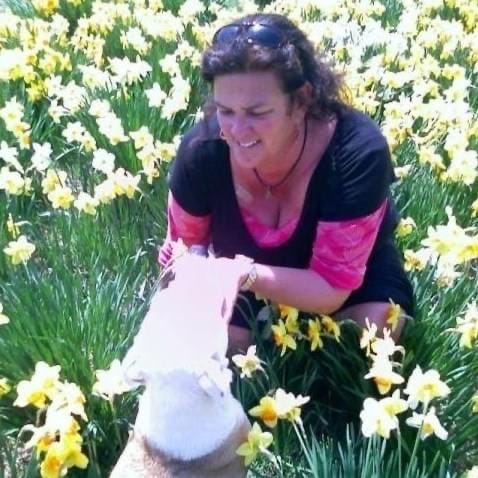I’m a dervish this week, called by swirling, thoughts spinning in multiple directions and moved by all elements. Wind, water, fire, air and ether calling me out beyond my known limits.
Last Sunday, Gazing out to sea in search of humpback whales, I saw a waterspout just below the horizon, a whirling dark cloud hovering above the blue expanse penetrated by whale song I heard when I entered the water and dove down a few feet. I did see whales. A mother and baby breached, hurling themselves into the air and displacing the water beneath then like white hot flames that thundered for miles through the Pacific, but it was the waterspout that moved me more. It seemed like something that couldn’t possibly exist. In comparison, the whales seemed familiar. Awe inspiring of course, but I keep thinking of how I was having such a hard time hearing them when I dove down. (My friend I was swimming with kept reporting songs I didn’t hear.) That day, at least, I wasn’t meant to hear the whale songs that travel across the world’s oceans in well-traveled lines. Something even more impenetrable was calling me, not in the shape of the linear narrative carried by a line, but a spiral, a shape always in motion, a pattern ever forming and re-forming.
In his remarkable book about the physical and metaphysical properties of water, Sensitive Chaos, Theodor Schwenk shows how the human avatar was structured around the spiral shape through the body’s evolution in water. DNA, the molecule inside cells that contains the genetic information responsible for the development and function of an organism are spirals. Ayahuasceros speak of consciousness falling to Earth in spirals that embedded in crystals embedded in Earth and yogic practice is a way to cultivate the rise of kundalini, an energy that spiral up the spine and explodes in the brain resulting in enlightenment, union with the divine. In the Mū Hawaiian tradition, the flow of cerebral spinal fluid creates oscillations that awaken brain glands operating at minimized capacity. Our ears are obvious spirals, channeling sound like seashells expressing the ocean’s roar at a whisper level we can handle. We are spirals.
I think of the beginning of Yeats’ poem “The Second Coming:”
Turning and turning in the widening gyre
The Falcon cannot hear the falconer;
Things fall apart, the center cannot hold.
Mere anarchy is loosed upon the world.
Which makes me remember how I used to be afraid to dance because I was terrified of the intensity of the whirling energy I could feel coiled inside me. It felt like if I released it I would explode and cease to exist. Instead, I learned to titrate, how to ride it like a wave. Now I dance with abandon to the point where people ask me if they can have what drug I’m on.
Truth be told, I long to stop titrating and just let it rip, whirl until the eyes roll back in my head and I’m flailing in the center of a circle like the photos I saw of African tribal women dancing in National Geographic when I was a girl. Those images both fascinated and terrified me. Mesmerized would be a better word for it. As psychologist James Hillman elucidated in his book The Soul’s Code, the seed of our destiny is often what we fear most as a child, his famous example being the renowned bullfighter Manolete, an exemplar of Spanish machismo, who was so timid as a little boy he clung to his mother’s skirts.
What were you afraid of as a little child whose call you haven’t yet answered?
Our bodies know the center cannot hold. They know they will transform through the passage named death and keep reminding us through creaky joints, gray hair, cancer, panic attacks, shortness of breath, fluttering hearts, dimming eyesight and arthritis. The list goes on…
Yet we resist, die our hair, try botox, get a hip replacement, survive cancer through chemo. All good things, but band-aids nevertheless. The wound will still call, and if we don’t listen, rise up and strike with the burning poison, an alchemical cobra who is willing to kill us if that’s what it takes to wake us up.
The gaze doesn’t have to be direct. Sometimes a sideways gaze can be just as penetrating. Not a glance, the eye must hold steady long enough for the wound to know you are willing to see what truths it holds in its mirror. A sideways look is a way of courting a wild animal, a doe that pauses between wood and field as dawn gives way to full daylight. This kind of look gives the wound some breathing space, coaxes it out of the shadows instead of demanding revelation like an Inquisitor so intent on punishment he doesn’t care what the truth is as long as he gets a confession.
We must remember, our wounds may actually be more fragile than we, the wounded, are. All of us have tender hearts, propelled through the life by a soft, pulsing muscle, we exist because a gyre spins blood that flows through veins and arteries until it hits the wall of our skin that keeps our bones contained. We are always journeying out, always returning.
Yeats was wrong about anarchy being “mere,” at least in our time. Things were different in 1919, when he wrote the poem. Ireland was in the midst of a brutal civil war against their British colonial oppressors. Although Yeats was a mystic and a prophet, consciousness has expanded since his time. Anarchy, meaning self rule, is no longer a “mere” political concept, but a spiritual path to sovereignty where we become aware of our responsibility of all our creations.
War and colonial oppression still exist, but for many (notably white Americans), they are distant events that take place on television. What can we do with this safety granted to us by circumstances of birth beyond our control to evolve humanity? I propose that anarchy has transcended itself and is offering us a path beyond the quagmire of politics that keeps us feeling we are victims of fates beyond our control.
Becoming an anarchist no longer means one has to protest in the streets and throw bricks at bank windows, a modern anarchist instead has the choice to listen deeply for what truly calls and then create a life around that. It’s called kiakahi in ‘Olelo Hawai’i, and while there are trials on this path to self revelation, it's not as difficult as fighting your way up the corporate ladder if that’s not your purpose. Look into the wounds and let the Earth help you. Water spouts and whirlpools and dust devils will rise up when they year your call, you may join the spinners at Grateful Dead Shows or become a dervish whirling at a bus stop or the grocery store. Everywhere will become a temple.
Here’s a proposal: let’s stop being afraid of trance. I realized one of the reasons I was so terrified to allow the gyre to move through me at full capacity was because I didn’t have that circle of women around me to hold me in my body when I let go. I still have not danced hard enough to fall into a trance. I still haven’t found that circle. But I know it’s possible and I’m not afraid of that part of myself any more. Maybe I just need to ask for the circle to appear and it will, or more likely I will realize that I am the circle.
Let’s throw ourselves, dervish style, into the whirlpools and dance floors. Let’s make the dance floors wherever we feel like dancing, not hold back, become the commanders of our own lives in the midst of chaos, for Chaos with a capital “C,” as the ancient Greeks knew, was the god of the disordered, unmanifest universe itself,, and the father of Eros, Creation itself. Chaos is the source of all this wonder we swim in now.
At the time that turned the heat of the earth,
At the time when the heavens turned and changed,
At the time when the light of the sun was subdued
To cause light to break forth,
At the time of the night of Makalii (winter)
Then began the slime which established the earth,
The source of deepest darkness.
Of the depth of darkness, of the depth of darkness,
Of the darkness of the sun, in the depth of night,
It is night,
So was night born.
So says the Kumulipo, the genealogical creation chant of a royal Hawaiian family. So accustomed to the sun and conditioned by Christianity to view the world outside ourselves as inanimate and without soul, most of us take the sun for granted, we forget it’s our ancestor, and that the sun has ancestors itself. Chants like the Kumulipo remind us of that. Here, we remember the sun’s ancestor is night, is darkness, is lack of light itself that doesn't know it’s missing light because it doesn’t exist yet.
Yet night is in our bones. We all know it because we all came from this place that’s impossible to know with the rational mind. Summoned by the union of two bodies, we come into the light and forget we all began in darkness, undefined and outside time. Most contemporary religions bypass this as well, telling us we ascend to some kind of Heaven filled with light with no room for shadows to dwell, but our bodies know this isn’t true. They know they are governed by gravity and belong to the ground.
Faced with returning to non-being, bodies do struggle-our minds are powerful, making the return to ground harder for some, but I’ve come to see through my own experiences, that the denial of death is more terrifying than death itself.
We’ve all heard stories or seen in movies how people wake up from amnesia. What if we all woke up from our collective amnesia and remembered where we came from? What would our lives look like then, lives centered in a spiral long enough to know their purpose, that once found, let go and let the whirlwind carry them to wherever they needed to go in order to fulfill it?
For some that kind of life might mean staying in one place, like so many fine people I know from my years of living on Block Island. The whirlwind held me there for what felt like many years, but now seems like the hour ferry ride to the island in rough weather. If you’ve been on that boat you know what I mean. Sometimes an hour seems like a sickening eternity.
My friend Jill Helterline was held in the still point, the hurricane’s eye, for many years on Block Island, but she let the wind take her when it was time for her to leave the island and began to travel around the world. I never knew where she’d show up on Facebook or in person. What she was looking for? Freedom, certainly. Another permanent home? She never told me, but I think she knew there was no such thing and wanted to see what it was like to experience life from that viewpoint. Did she discover her body as a permanent home? I wish I’d asked her that.
From what I heard of her last weeks, whatever she learned in those traveling years served her well. I wasn't there to see Jill in her final weeks, but I’m told by people that were that she faced death peacefully. The word “nonchalant” was used and “C’est la vie.” Of course those could be defenses, but in my heart I don’t feel they were, not at the core. Even if sadness, fear, or regret were momentary visitors- (Which to be clear I don’t know. In all matters, but especially in an event as momentous as the end of someone’s story, it’s important to never make assumptions)- she didn’t resist gravity when it claimed her as its own.
Not resisting death is an act of generosity. It’s saying yes to Chaos, which is saying yes to Creation. I will miss Jill for the rest of my life and wonder what more adventures we could have had together in the physical, but already she’s showing up with her characteristic skepticism and humor, a witty mask for an insatiable curiosity and genuine interest in everything around her as well as a way to navigate being in a perpetual state of wonder.
“So what are you doing,” she said yesterday, less than a week after her death, ambling into the treatment room where I was working on a client in a Body Re-Enchantment session. Things were intense. I was deep in it and so was my client. Jill’s laconic voice made me silently laugh to the point tears came into my eyes as I cradled my client’s occipital. Yes, the transformation was serious and needed, but that doesn’t mean there isn’t space for humor, something Shakespeare knew so well. Let’s listen to Prospero declaim in The Tempest:
Our revels now are ended. These our actors,
As I foretold you, were all spirits and
Are melted into air, into thin air:
And, like the baseless fabric of this vision,
The cloud-capp’d towers, the gorgeous palaces,
The solemn temples, the great globe itself,
Yea, all which it inherit, shall dissolve
And, like this insubstantial patent faded,
Leave not a rack behind. We are such stuff
As dreams are made on, and our little life
Is rounded with a sleep.
-William Shakespeare, The Tempest, Act IV, Scene I
Once in Tulum, our paths crossed and Jill agreed to take a taxi with me outside town to Laguna Kan Lu’um to get a janzu session. I had no idea what to expect. I was aware of her skepticism, that little edginess it gave her, and also aware of the wonder beneath its witty surface. She was a lot taller than me and I was wondering if I’d be able to manage her body in the water if she didn’t relax. It’s hard to float a person with locked legs and core and almost impossible (and traumatizing for them) to bring them under the water. Jill listened to my spiel about the nose clip and being passive, letting all the motions come from me without comment. Mexican kids were jumping off the dock where schools of tiny minnows rested in the shade broken by slats of light. The water was the same shade as green as her eyes.
No one surrendered to the water like Jill. I didn’t take her under the water, she went there herself. Yes, I was the one moving her, but she was the one flying. On the far side of the laguna, a large white heron stood on one leg so still the minnows forgot it was there, and when they came to rest in its shadow, were struck by the bird’s lightning beak and swallowed alive. If you’d been there you could have seen the fish in the heron’s gullet, swimming into the unknown. Was there a last minute resistance when the acid in the heron’s gut began to dissolve the minnow’s quicksilver? Maybe. Most likely. Life is meant to live after all.
In memory of Jill Helterline
Kō aloha la ea
Concentrate on love by way of the light
Notes:
“The Second Coming,” by William Butler Yeats.
The Soul’s Code: In Search of Character and Calling, by James Hillman.
Sensitive Chaos: The Creation of Flowing Forms in Water and Air, Theodor Schwenk, Rudolf Steiner Press, 1965.
The Kumulipo: A Hawaiian Creation Chant, translated and edited by Martha Warren Beckwith, University of Hawaii Press.
The Tempest, William Shakespeare






